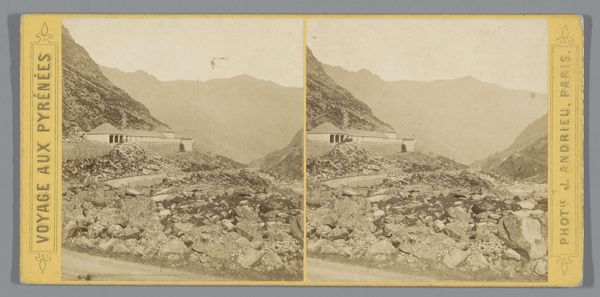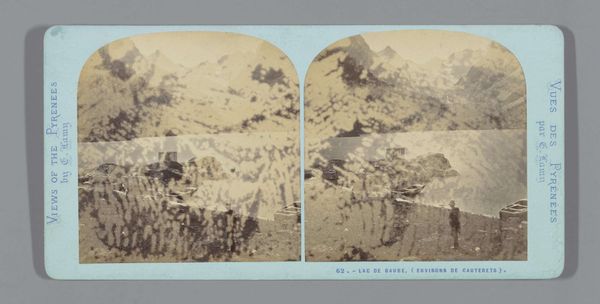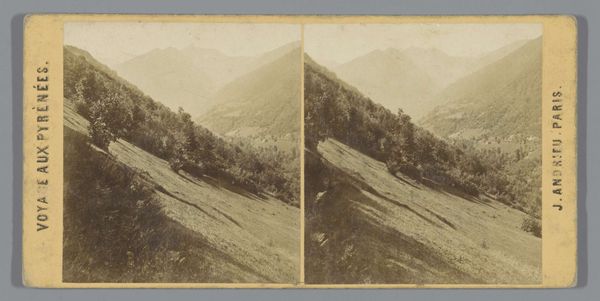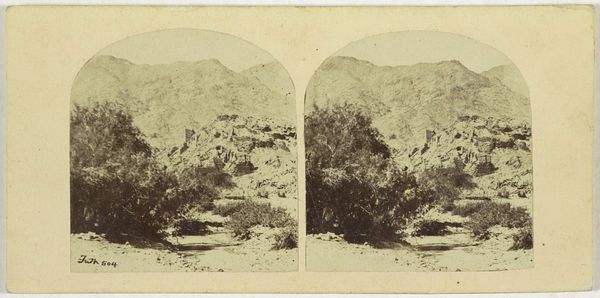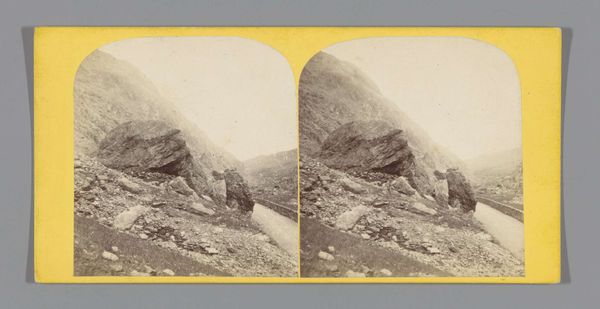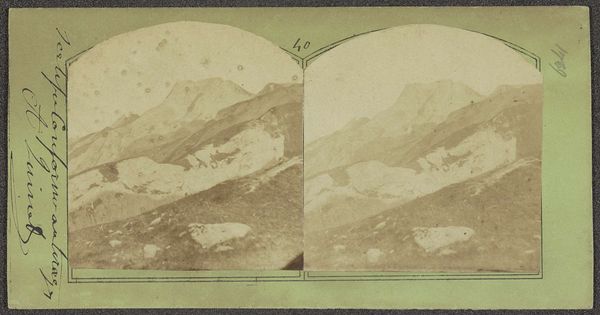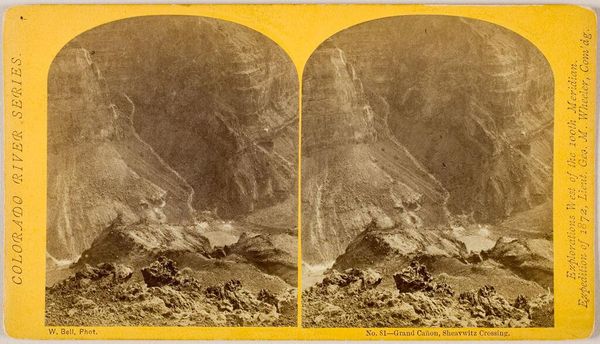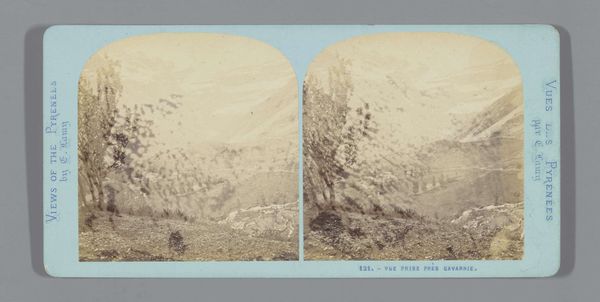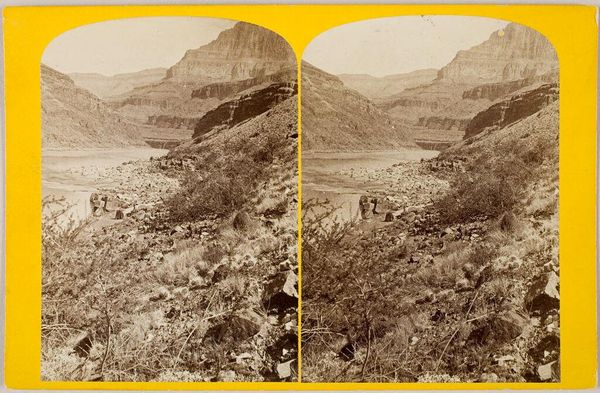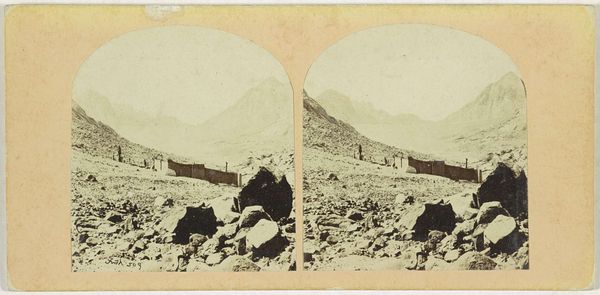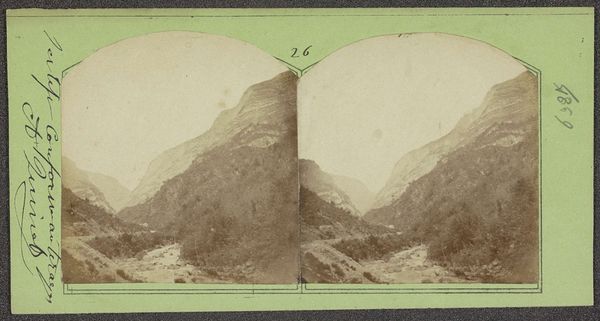
photography
#
landscape
#
photography
#
coloured pencil
#
mountain
Dimensions: height 85 mm, width 170 mm
Copyright: Rijks Museum: Open Domain
Editor: Here we have Jean Andrieu's "Landweg in de Pyreneeën," taken sometime between 1862 and 1876. It appears to be a photograph. I’m immediately struck by the sheer amount of stone; it feels very tactile, almost oppressive. What can you tell me about it? Curator: Looking at this image through a materialist lens, the process is as telling as the vista itself. The very act of capturing this rugged landscape via photography, then a relatively new technology, speaks volumes about industrial society's urge to dominate and categorize nature. What kind of labor was required to get the equipment up the mountains? What does it say about the culture that would consume these images as commodities? Editor: That's fascinating. I hadn’t considered the physical effort involved. So, the photograph isn't just a picture, but a record of... exploitation, perhaps? Curator: Precisely! We can even think about the materiality of the photograph itself: the paper, the chemicals. Each of these elements has its own history of extraction, production, and use that tie it back to systems of labor, value, and power. Do you notice how the stereoscopic presentation further commodifies the experience of nature? It creates an easily consumed "realistic" view. Editor: Now that you mention it, it does seem like a constructed experience. Something manufactured for consumption, like a postcard. Curator: Indeed. It takes the rawness of the real mountain range and turns it into something digestible and possessable. And let’s not forget the individuals depicted in the image. What was their role in creating the “perfect view”? Editor: This has really opened my eyes to thinking about art in a completely new way! It's not just the subject, but the entire system behind it. Curator: Exactly. It reminds us to critically examine not only what we see, but also how it was made and who benefitted.
Comments
No comments
Be the first to comment and join the conversation on the ultimate creative platform.
